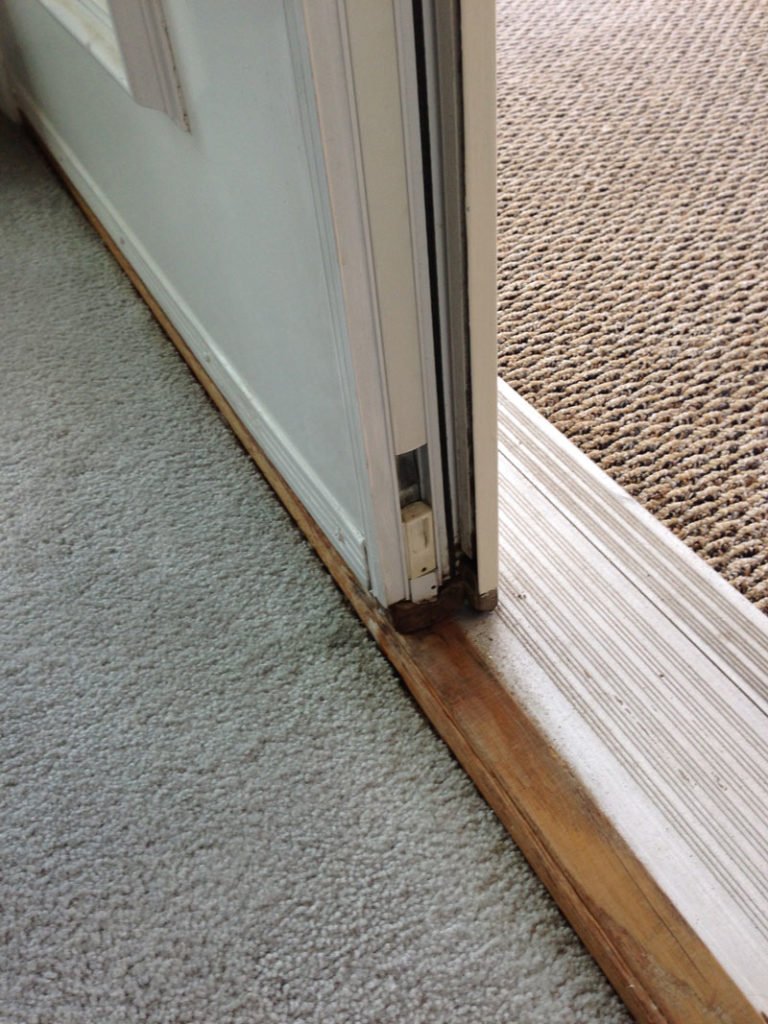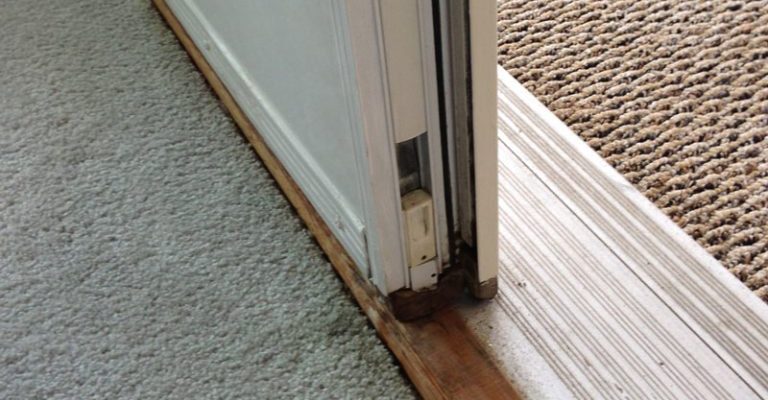
So, what’s going on? Why do your Schlage, Kwikset, or Yale locks (or pretty much any exterior hardware—no matter the brand) seem to develop an attitude problem the second the weather goes arctic? Let’s dig into what actually causes door hardware to stick in sub-zero temperatures, and what you can do about it, without calling a locksmith every January.
How Freezing Temperatures Affect Metal Door Hardware
Metal is tough. But when the mercury plunges, even the sturdiest brass or stainless-steel hardware starts behaving differently. Here’s the thing: when temperatures drop below zero, the molecules inside metals slow down and get closer together. This causes the metal parts inside your door hardware—like the latch, lock cylinder, and handle mechanisms—to actually *shrink* a tiny bit. It’s not enough to see with your eyes, but it can make a real difference in how everything fits and moves.
As metal contracts, tolerances (the tiny spaces between moving parts) get even tighter. That means the parts that usually glide smoothly might start to grind or catch. Add a little frost or condensation into the mix, and suddenly, everything’s harder to turn. Even high-quality hardware brands like Schlage, Emtek, or Baldwin aren’t immune. It’s physics, not bad manufacturing.
Quick insight: Think of your hardware like a coat zipper that gets a bit “sticky” when the fabric is cold and stiff. The cold itself isn’t always the only culprit, but it certainly makes everything less cooperative.
The Role of Moisture and Ice Inside Locks
You might be wondering, “If it’s just cold, why does my lock act frozen solid sometimes?” Moisture is usually the hidden villain here. Everyday air carries humidity—even in winter. When you open and close your door, a bit of warm, humid air sneaks into the lock and hardware. In sub-zero temperatures, that moisture can condense inside the mechanism and turn to ice.
Here’s where things get really sticky (pun intended):
- Ice crystals can form around the lock pins, latch, or even deeper inside the mechanism, physically blocking movement.
- Even a thin layer of frost can cause metal parts to bind or seize up temporarily.
- If you use a key, it might not fully insert or turn, leaving you stuck outside—or worse, snapping the key if you force it.
You’d be surprised how often it’s not just about the hardware “freezing up” in a dramatic way. Sometimes it’s just stubborn, gritty, or slow because of a whisper-thin layer of frost.
Weatherstripping, Alignment, and Door Swelling
Believe it or not, the door and the frame matter just as much as the lock itself. In sub-zero weather, wood and metal doors can shift, shrink, or swell. Maybe the weatherstripping is so stiff in the cold that it shoves the door just a hair out of alignment. Or, the frame itself gets a little tighter because of frost build-up or contraction.
Let me explain how this messes with your hardware:
- If your door shifts, the latch might not line up with the strike plate, so it drags or jams when you try to open or close it.
- Bulky weatherstripping can put extra pressure on the latch every time you pull the door shut. In the cold, that pressure gets worse as the rubber or foam stiffens.
- Even older, slightly warped doors can go from “good enough” to “won’t budge” once things freeze up a little tighter.
Honestly, I’ve seen doors that work perfectly in the fall suddenly refuse to cooperate after the first deep freeze. If you notice your door hardware barely working when it’s cold, but fine when it warms up, alignment and door movement are likely suspects.
Lack of Lubrication and Old, Dirty Hardware
Here’s a common scenario: you never think about lubricating your door locks or handles—until one day you’re wearing gloves, wind howling, and the lock refuses to budge. Cold weather makes old grease and dirt inside the lock even gummier, which is just about the last thing you want when everything’s already tight from the cold.
A few things can make this worse:
- No lubrication: Without annual maintenance, metal parts rub and create micro-burrs or corrosion, which stick even harder in winter.
- Wrong lubricant: Oil-based lubes can actually attract dirt and thicken up in the cold, making things worse. Silicone- or graphite-based products are better for freezing weather.
- Dust and debris: Over time, tiny particles get inside your lock or handle. In the summer, they’re just annoying. In the winter, they might as well be cement.
Sometimes, a basic cleaning and the right lubricant can make a world of difference—turning a stubborn lock into one that spins like new.
Brand-Specific Issues with Exterior Door Hardware in the Cold
Not all hardware brands are created equal when it comes to sub-zero temperatures. While most modern exterior locks and handles from brands like Schlage, Kwikset, Yale, and Weiser are designed to handle a wide temperature range, some quirks can show up.
For example:
- Schlage locks often have tight internal tolerances, which means even a little contraction or ice can make things stiff. But they’re less likely to corrode if you keep them clean.
- Kwikset locks are popular, but sometimes have plastic parts inside that don’t tighten or contract the same way as metal, so one cold snap can make the keyway misalign.
- Yale and Weiser locks tend to use robust metal construction, but if you don’t lubricate them, their complex mechanisms can seize faster in extreme cold.
The truth is, no brand is totally immune. Proper care, lubrication, and installation matter more than the sticker on the box when winter really hits.
Troubleshooting: How to Fix Sticky Exterior Door Hardware in Cold Weather
Alright, so your door hardware is acting up. What can you actually do about it, short of banging your fist on the door and hoping for the best? Here are some practical steps to get things moving again:
- Warm the lock gently: Use a hairdryer on low heat, held a few inches away, to thaw any ice inside the hardware. Don’t use open flames or boiling water.
- Apply lock de-icer or isopropyl alcohol: A squirt into the keyhole or around the latch can melt thin layers of ice instantly.
- Lubricate with graphite or silicone spray: Insert the straw attachment into the keyhole or moving parts, spray lightly, then work the key or handle back and forth to spread it.
- Check door alignment: Look for shiny spots or scrape marks where the latch or bolt hits the strike plate. Adjust the plate or tighten screws to improve alignment if needed.
- Inspect and replace weatherstripping: If weatherstripping is too bulky or worn out, swap it for a type that flexes better in the cold (look for silicone or low-temp rubber).
For smart locks or remotes (yes, some brands have remote and battery-powered models now!), make sure the battery isn’t dead and that the electronic sync hasn’t glitched due to cold. Sometimes, just resetting the code or giving the battery a quick warm-up in your hand can help.
Preventing Sticky Door Hardware: Maintenance Tips for Winter
Want to save yourself future headaches (and cold fingers)? Here’s what you can do as preventive maintenance before deep winter sets in:
- Clean and lubricate locks and handles at least once a year, before it gets cold. Use the right product: graphite or dry silicone works best for most hardware.
- Seal up gaps: Make sure your door and frame don’t have cracks that let in extra moisture. Even a tiny draft can bring in humidity that freezes inside your hardware.
- Test everything on a cold morning, not just when it’s warm. That way you’ll spot problems before it’s -20°F and dark outside.
- Replace worn or loose parts: If your handle is floppy, the latch is wobbly, or your key turns rough even in good weather, don’t wait for winter. Fix or replace those parts early.
Think of it like prepping your car for winter—if you wait until the first snowstorm, you’re already behind.
When to Repair or Replace Exterior Door Hardware
Sometimes, no matter how much you tinker, the hardware just keeps sticking or freezing in the cold. Here’s how to know when it’s time to stop troubleshooting and consider replacing your exterior lock or handle:
- If the lock mechanism is so worn or corroded that cleaning and lubrication don’t help, replacement is usually smarter (and safer) than fighting with it all winter.
- If you notice cracking, pitting, or loose parts that can’t be tightened, it probably means the hardware’s lifespan is up.
- For smart locks or keyless remotes, frequent battery failures in the cold might mean it’s time for a better model with stronger cold-weather ratings.
Upgrading to a more robust weather-rated model (many Schlage, Yale, and Emtek brands have “all climate” versions) can make a world of difference in how smoothly your door hardware works when temperatures nosedive.
Final Thoughts: Keeping Your Door Moving in Sub-Zero Weather
At the end of the day, exterior door hardware sticking in sub-zero temperatures is a mix of physics, moisture, and sometimes a dash of neglect. It’s not just about one part—or even the weather alone—but a blend of cold metal, a little ice, maybe a stiff door, and the occasional missed maintenance.
Addressing the problem means looking at the whole system: the lock, the door, the weatherstripping, and—yes—even your habits. With a few simple maintenance steps and a little understanding of how cold affects the moving parts, you’ll spend a lot less time shivering on your welcome mat.
So next time your Schlage, Kwikset, or any other brand’s hardware feels frozen in its tracks, remember: it’s fixable. A bit of care, the right lubricant, and a warm touch can keep your doors opening smoothly, no matter how low the temperature dips.
